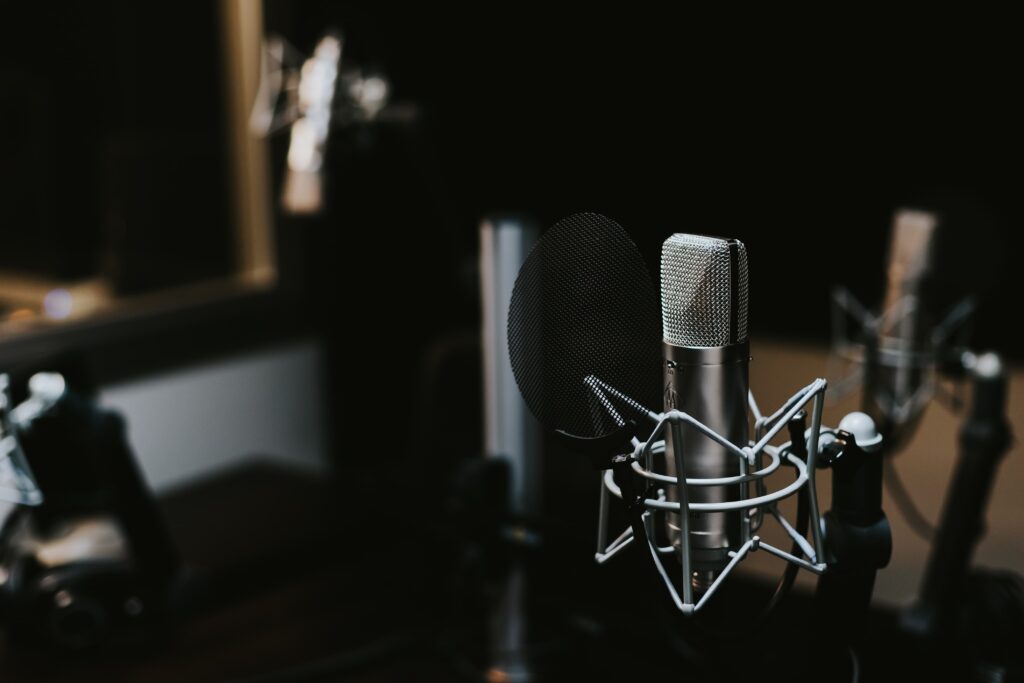The FET (field-effect transistor) microphone is a type of condenser microphone where the main part of the preamplifier circuit is a field-effect transistor (FET). When they were first made in the late 1950s, FET microphones quickly became popular because they could make a clear, crisp sound with low noise and high sensitivity.
One of the best things about FET microphones is that they can work in a wide range of temperatures and levels of humidity. Because of this, they can be used in many different places, like outdoors and in studios. FET microphones are also known for having a fast transient response, which lets them accurately pick up percussion sounds and other high-frequency transients.
Since they were first made, FET microphones have become an important tool for people who work in recording and sound reinforcement, and they are still used in a wide range of situations today.
What is a Fet microphone?
FETs are active electrical devices that use the electric field from a microphone capsule to control the flow of current, which becomes the mic signal. FETs turn the high-impedance signal from mic capsules into a low-impedance signal that can be used.
Pros of a Fet microphone
A FET (Field-Effect Transistor) microphone is a condenser microphone whose preamplifier circuit is built around a field-effect transistor (FET). Some of the most important things about a FET microphone are:
- High sensitivity: FET microphones are usually more sensitive than other microphones, so they can pick up weaker signals more easily.
- Low noise: FET microphones tend to make less background noise than other microphones because they have a high signal-to-noise ratio.
- Fast transient response: FET microphones are known for their fast transient response, which means they can accurately reproduce sudden changes in sound levels. This makes them good for picking up percussion instruments and other sounds that change quickly.
- Wide frequency response: FET microphones usually have a wide frequency response, which means they can pick up a wide range of frequencies. Because of this, they can be used to record a wide range of instruments and vocals.
Cons of a Fet microphone
A FET (Field-Effect Transistor) microphone has a few things that could go wrong:
- Cost: FET microphones, especially high-quality ones, can be more expensive than other microphones.
- Requirements for power: FET microphones usually need phantom power, which means they need to be plugged into a mixer or something else that gives them the right voltage. This can be inconvenient if you use the microphone somewhere that doesn’t have an easy way to get power.
- Temperature sensitivity: FET microphones can be affected by changes in temperature, which can change how well they work. This can be a problem in places where the temperature changes quickly or is very hot or cold.
- The proximity effect: FET microphones can have a proximity effect, which means that as the microphone gets closer to the source, the bass frequencies get louder. This effect can be good in some situations, but it cannot be good if you want to record a flat, neutral sound.
There are fewer tonal options with FET microphones because they tend to have a flat, neutral sound. This can be good in some situations, but it can also make it hard to get the tone you want. There are better choices than a FET microphone if you want a microphone with a sound that has more color and personality.
What is a class a Fet microphone?
What is a Fet microphone used for?
Vocals: Because FET microphones are sensitive and can pick up a wide range of frequencies, they are often used to record vocals. They are especially good at picking up small differences in the voice and making a clear, natural sound.
Instruments: FET microphones are often used to record guitars, pianos, drums, and brass instruments, among other things. They are good at picking up the full range of frequencies from most instruments and accurately reproducing their sounds.
Percussion: FET microphones are known for their fast transient response, which makes them good for recording percussion instruments like drums and percussion.
Amplifiers: FET microphones are often used to mic up guitar and bass amplifiers because they can pick up the high-energy transients that these instruments make.
Live performance: FET microphones are often used in live performances due to their durability and high sensitivity. They can be used for many things, like vocals, instruments, and percussion.
Podcasting: Due to their high sensitivity and wide frequency response, FET microphones are often used for podcasting because they are good at picking up the human voice.




